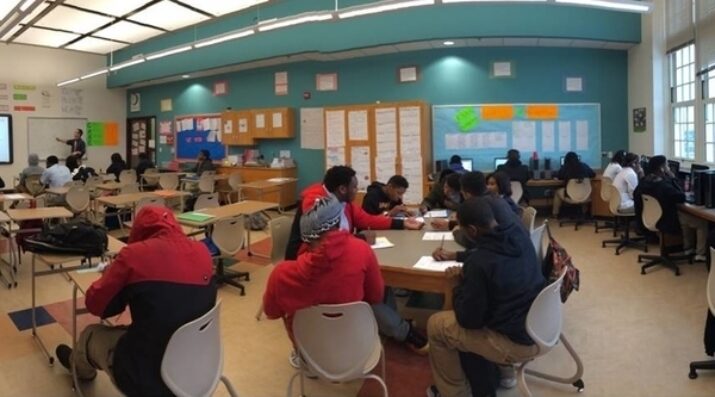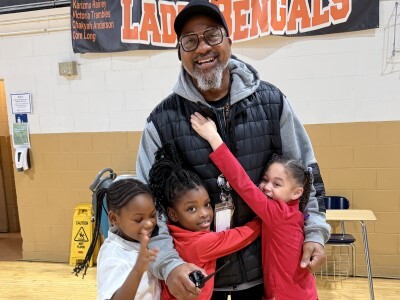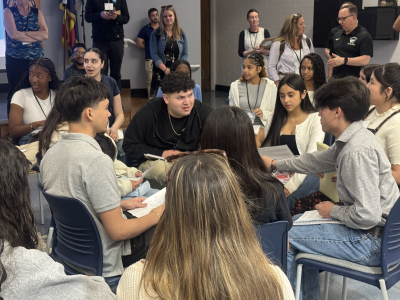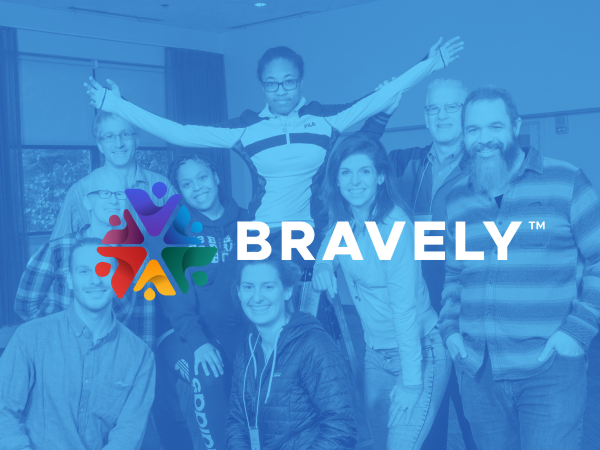From Struggle to Success: A Teacher’s Journey through Professional Learning and Innovation
Topics

Educators are the lead learners in schools. If they are to enable powerful, authentic, deep learning among their students, they need to live that kind of learning and professional culture themselves. When everyone is part of that experiential through-line, that’s when next generation learning thrives.
When teachers have choice in professional learning, they can discover the innovative, research-backed approaches to teaching that work for them.
As a freshly minted, novice mathematics teacher, I struggled with classroom management, time management, lack of pedagogical knowledge, understanding different learning styles, and accommodating student needs. This shocked me because I had worked through a rigorous undergraduate secondary mathematics degree where I took many mathematics and mathematics education courses. I was even enrolled in a master’s program in secondary mathematics. In addition, I was working alongside veteran educators and following their curricular materials. My department chair said I needed to develop a stronger understanding of setting up structures in my classroom and my curriculum. I read a few books and observed countless classrooms, but I could not use the practices that I learned in a way that worked for me. Moreover, I could not force myself to become immersed in the traditional style of teaching and forget the innovative practices I was exposed to as an undergraduate.
The following spring, I was in a new school district and still experiencing many of the same struggles I experienced in my previous position. My district offered a professional learning opportunity with the Modern Classrooms Project organization, known as the Virtual Mentorship Program (VMP), to learn about their model based on three principles: blended learning, self-paced structures, and mastery-based grading. I had experience with the blended learning component through my experience as an undergraduate, where I learned about teacher-made instructional videos. I had even attempted to use instructional videos in my previous school district but could not do so in an impactful manner. Also, my new school, High School in the Community (HSC) of New Haven, Connecticut, uses a mastery-based grading system, so I knew this model would work well in my classroom.
Making these adjustments required immense effort, but the result was an increase in student engagement, mastery of more content, and an overall more positive perception of mathematics.
After completing the Virtual Mentorship Program, I piloted the model with my precalculus course. Initially, I struggled with implementing the model and found the lessons covered too many concepts with not enough practice problems. Students were experiencing cognitive overloads and voiced concerns that the videos covered too much information. Using their feedback, I adjusted the model and split my current lessons into smaller lessons with more instructional videos that provided a deeper lens of the topic. Making these adjustments required immense effort, but the result was an increase in student engagement, mastery of more content, and an overall more positive perception of mathematics.
The model also helped me develop a deeper understanding of my own students' learning and progress. Gauging a student’s understanding throughout a unit can be difficult until a quiz or unit assessment. However, when a unit is split across sets of lessons with mastery checks, there are many opportunities to identify students’ misconceptions throughout the unit. Thus, when the time comes for larger assessments, any interventions that were needed have already taken place.
I saw a more immediate impact from the self-paced structures. When I introduced a public pacing tracker, students began to take ownership to complete work so they would not be behind in class. Also, the tracker allowed me to strategically create seating charts for students. Typically, students viewed seating charts as a punishment due to misbehavior in class, but now view the seating charts as a way to optimize their learning experience. Students also became more comfortable working with everyone else in the class, understanding their placement is based on their mastery of the content.
The most meaningful outcome of the model has been the sustainability it brings to my teaching. I used to spend class time answering the same questions countless times and would need to determine how to support a student who may have missed class. But with the incorporation of the model, I realized, early on, that I was no longer repeating myself. By being more helpful, I empowered my students to rely on themselves and thus disrupted the idea that the teacher is the only person with answers.
The model’s systemization of research-backed strategies allowed me to use the pedagogical techniques that I knew in an optimized, impactful way. As a result, I was able to take a step back and develop a stronger understanding of my curriculum. I better understood the ordering of mathematics topics and best practices for developing various mathematical concepts without causing cognitive overloads for students.
I think my experience is a testament to the benefits of allowing teachers to find a professional learning opportunity that works best for them. When I was a struggling first-year teacher, I was given support from my department chair that did not work, and I was viewed as ineffective. However, when I was in a school that supported me in choosing my professional development and empowered innovative, creative approaches, I was able to be an impactful educator and came to love the teaching profession.
Photo at top courtesy of Modern Classrooms Project.




